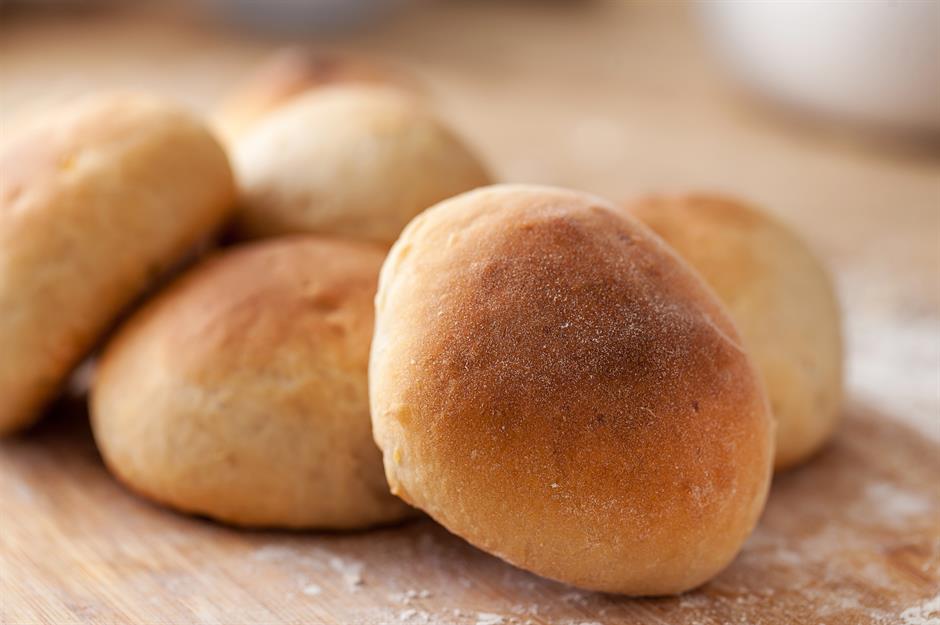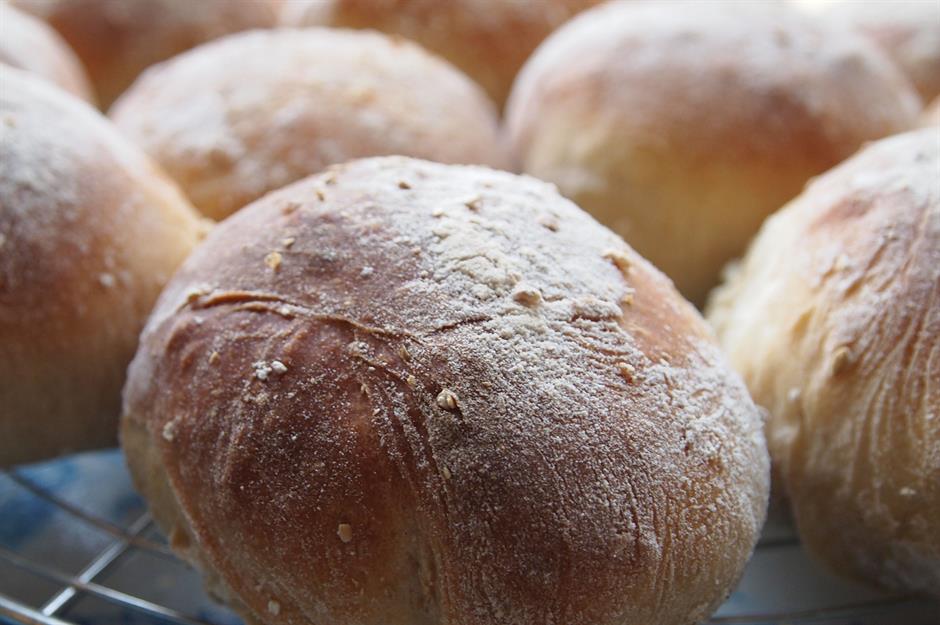Batch, barm, cob or bap: what do you call a bread roll?
The great British bread debate
When is a bread roll not a bread roll? When it's a bap, a batch, a buttery, a roll or a rowie. Across the British Isles there's a great variety of names for this staple many eat daily. We reveal the regional specialities vying to be Britain’s favourite.
Morning roll
You may hear talk of morning rolls across the UK – from the tip of Northern Ireland to Sussex, mid-Wales, Somerset, Devon, Shropshire, the West Midlands and central Scotland. Also known as a Scotch morning roll, they tend to be chewy and have fired or crisp lids. In Glasgow, find them filled with square sausage, black pudding, a fried egg or potato scone.
Stotty cake
Ask for a bread roll in the northeast and Newcastle and you may well be served a stotty, or stottie cake. A traditional flat bread originally made using dough off-cuts, it doesn’t get a second rise or second knead and was once cooked in the bottom of the oven as it cooled. The result is a limited rise and more dense filling.
Cob
All around the UK, from North Wales, north Norfolk and the northwest to northern Scotland and the East Midlands, you'll often hear a bread roll called a cob. Locals claim it's the original word to describe a roll, used for hundreds of years in farming and by the nation’s unofficial bread expert Paul Hollywood.
Bap
Vying with cob as the main alternative, bap is used in London, the northeast, Northern Ireland and much of south Wales. Die-hard bap-lovers distinguish a bap as a softer bread roll with minimal crust and fill them with crispy bacon and sauce for breakfast. More decadent variants such as burger baps, with added butter or lard, start to resemble French brioche.
Bin lid
In Liverpool and the surrounding area a request for a bin lid should, in all likelihood, net you a white or brown bread roll. Apparently, there’s nothing humorous about walking into a fish and chip shop and ordering a chip bin lid in these parts.
Vienna
A Vienna – a term sparingly used in parts of Essex, Norfolk and Suffolk – refers to any bread roll, but often with a twist. They might be plain or topped with poppy or sesame seeds and have a fairly substantial crust. In other parts of England, a Vienna roll refers exclusively to twisted rolls. Meanwhile, some supermarkets sell it as an oblong crusty bread.
Teacake, oggie or lardy cake
In Cornwall a bread roll might also be called a teacake, oggie or lardy cake. Different to the currant or dried fruit sweet bread that's usually toasted and eaten with butter, a teacake resembles a plain white roll. To make things more confusing, an oggie might also refer to a pasty.
Bread cakes
In Leeds, a bread roll may simply be called a bread cake and resemble a typical British soft bun, or more traditional versions may resemble a flatbread. In Lancashire this style is known as an oven bottom.
Aberdeen rowie
The Aberdeen rowie (also known simply as a rollie, an Aberdeen roll or even a buttery) is a butter-rich bread roll, slightly similar to a French croissant. Originally made for fishermen going out to sea for days at a time, the beauty of the rowie is it stays fresher for longer, mainly due to the high butter content. They're popular throughout southwest Scotland.
Muffin
Not to be confused with a sweet muffin, a muffin in parts of Northern Ireland means bread roll. This is also not the same as an English breakfast muffin, which is more flat and cooked on a griddle.
Barm
Popular in the northwest of England, a barm cake isn’t, confusingly, a cake, but a soft, round, white bread roll. Barm is also what people are said to have called the foam on fermenting ale which was traditionally used to leaven bread. It's favoured as a carby vehicle for chips, a pie or pasty, or black pudding.
Discover a history of afternoon tea and how to host your own
Batch
A bread roll in north Warwickshire, Nuneaton and Coventry, as well as on the Wirral, is commonly known as a batch. The name probably derives from a batch of bread rolls being baked.
Make your own rolls at home with our brilliant tips for baking bread

